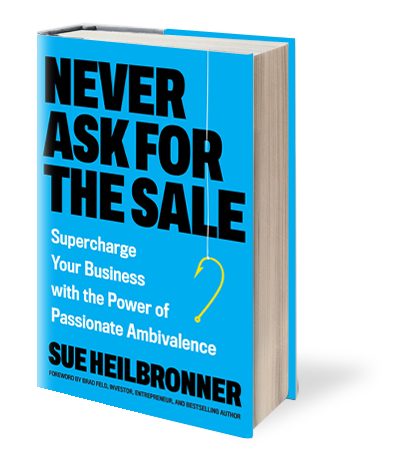Shifting Your Core Pattern from the Rear
I was doing a little “couples coaching” with two partners on an executive team at a client company. One is a Type 8 “Challenger” and one is a Type 2 “Helper” in the Enneagram Personality Typing system. I know them both quite well, and it’s become clear I think to all of us that this duo has developed an interlocking pattern — a relational dynamic that basically locks each of their core personality patterns together, making it a very difficult dynamic for them to shift.
Here’s how it goes for them:
- Leader challenges Direct Report with an aggressive, critical style in moments when Leader is not at their best
- Direct Report becomes submissive and overly deferential to Leader when friction, conflict, and negativity arises
- Leader sees that reaction and becomes more aggressive, unconsciously judging Direct Report as weak, finding themself triggered by the weakness, and coming on even stronger
- Direct Report submits further, judging themself as being wrong, inadequate, and ill-suited for the role.
- Leader later realizes error of their reaction and calls or texts an authentic, comprehensive, heartfelt apology to Direct Report and begins the process of self-forgiveness
- Direct Report is relieved to get said apology and begins the process of self-forgiveness
- Leader and Direct Report come back into what feels like a heightened state of connection until something goes awry and the pattern begins again
In watching this pattern over the past many months, I realized that both these executives are absorbed by it because they both find the repair phase appealing, intimate, and rich. Unconsciously, they both have been repeating this pattern because the repair phase is a bit of a “release valve” or a “numbing behavior” that makes the pain of the initial shame and blame cycle seem tolerable.

As I tuned in to this pattern, I offered the Leader this prompt: “Leader, you cannot apologize to Direct Report (or anyone else) for 30 days.” The idea was that if the Leader knew the release valve would be unavailable, they might pivot the very low-level negative behavior before it happened next time. They might forecast the regret and bad feelings that come with this behavior sooner, and they might shift before initiating the painful sequence.
This struck me as an example of working a core pattern from the back. Instead of focusing on conscious behaviors and unconscious commitments that might render someone aggressive or deferential, we could look at the outcome of the pattern, cut off the possibility of the release valve behavior, and see what happens working backward. The operative question is “how would you show up differently if you knew your normal ‘out’ wouldn’t be available?” It’s important to note that both these executives are avid practitioners of conscious leadership, and they both have a high degree of self-awareness. Like the rest of us, however, this doesn’t keep them completely out of drama.
When I presented this use case to a group of leaders in the Coaching Certification for Leaders program, we all realized that almost everyone has some form of that “release valve” that we rely on to return a painful process back to something more tolerable. These releases may be tied to personality type.
Release valve behaviors might include:
- Apologizing and making up
- Going overboard in being helpful and accommodating
- Finding a way back to peace by being agreeable
- Finding a way back to internal safety by getting apathetic and checking out
- Seeing a situation as emotional and going into planning or research mode to create a path away from it
- Gossiping about someone to make yourself feel better and get validation from your gossip partner
Each of these behaviors is a “hero” behavior on the Drama Triangle, meant to ameliorate pain, but the relief is only temporary, and this kind of release valve can leave us with recycling patterns. This is particularly worth attending to with key relationships at work and at home.
So you might:
- Ask yourself what your release valve behavior is
- With respect to that behavior, find one measurable thing you do that offers you a way to fully engage in that behavior (e.g., opening a new spreadsheet, cooking a nice dinner, playing video games, etc)
- Next, if this behavior is relieving you from pain in a specific relationship, try a ban on that behavior for a period of time. Talk to the relationship partner in this situation and invite them to do the same to attempt to disrupt your recycling pattern as a couple, team of founders, etc.
- Then, let me know how it goes!
